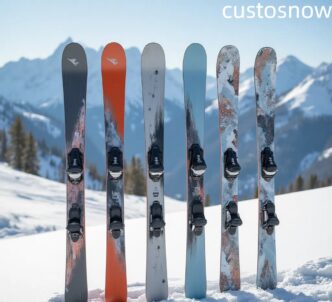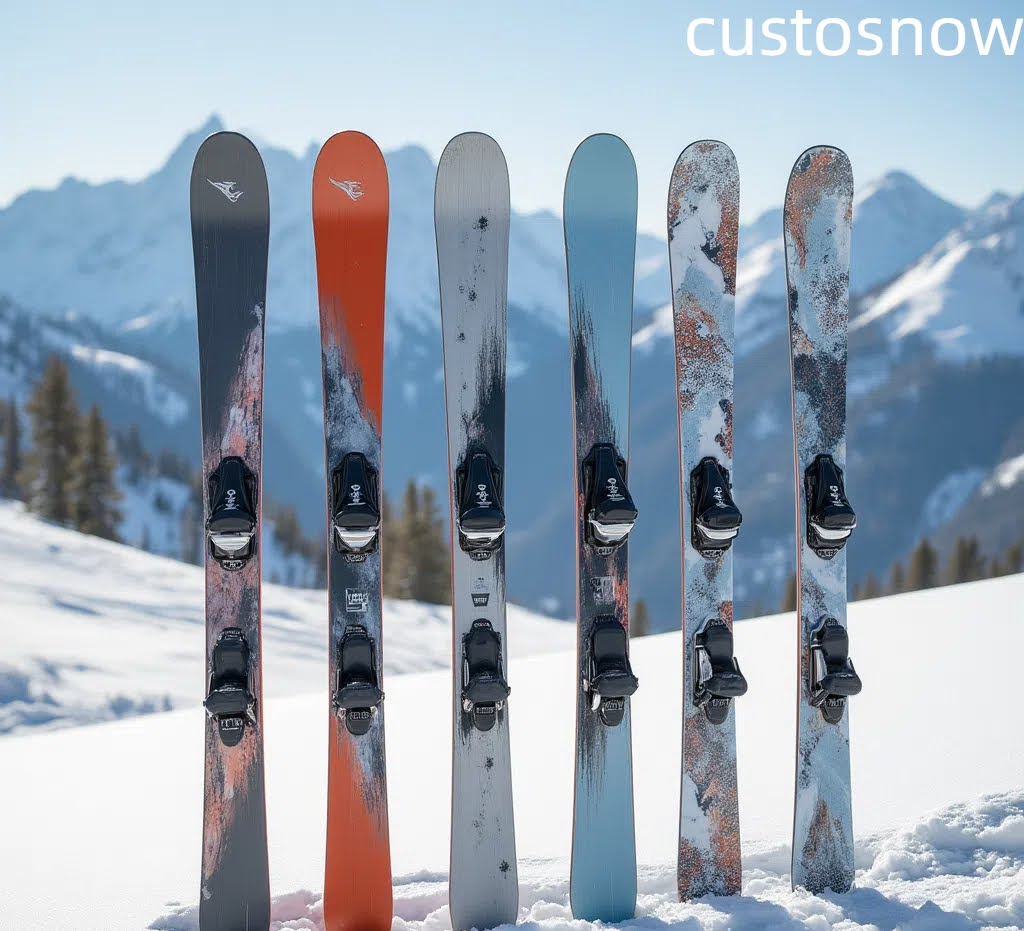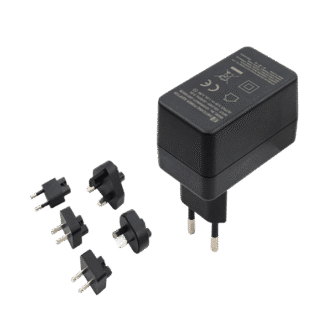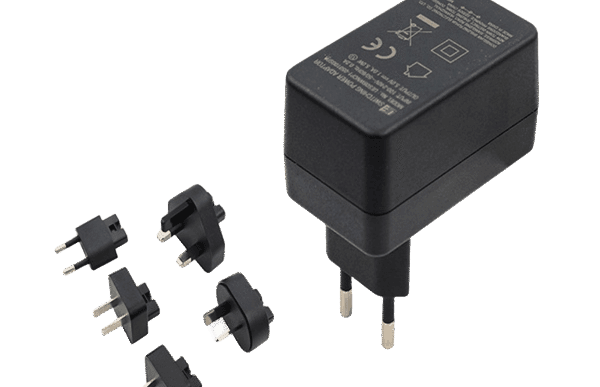The snowboard industry has undergone a remarkable transformation in recent years, with customization emerging as one of the most significant trends reshaping how riders select and purchase their equipment. This shift from mass production to personalized experiences represents a fundamental change in the relationship between manufacturers, retailers, and consumers.
The Rise of Personalization in Snowboarding
The concept of the best snowboard has evolved dramatically over the past decade. While riders once selected from standardized options based primarily on length and width, today’s consumers increasingly seek equipment tailored specifically to their unique needs and preferences. Companies like Custosnow snowboards have pioneered this approach, offering comprehensive customization snowboard options that allow riders to specify exactly how they want their board to perform.
This trend toward personalized snowboard experiences reflects broader consumer patterns seen across multiple industries. Modern consumers increasingly value unique products that reflect their individuality and meet their specific requirements. In snowboarding, where equipment performance directly impacts the riding experience, this personalization offers tangible benefits beyond mere aesthetic distinction.
The customization movement gained significant momentum following the 2008 economic downturn, when many riders began keeping their equipment longer and investing more thoughtfully in higher-quality, longer-lasting products. Rather than replacing boards seasonally, consumers increasingly sought equipment that would remain relevant and performant for multiple seasons – a perfect scenario for customized solutions designed for specific individuals and riding styles.
The Spectrum of Customization Options
Snowboard customization exists along a spectrum, ranging from simple aesthetic modifications to comprehensive performance customization. At the most basic level, many manufacturers now offer custom graphic options, allowing riders to personalize the visual appearance of otherwise standard boards. This approach satisfies the desire for individuality without requiring significant manufacturing adaptations.
Mid-level customization typically involves selecting from predetermined component options. Riders might choose specific camber profiles, flex patterns, or sidecut geometries from established options, creating semi-custom boards that better match their preferences than completely standardized models. This approach balances personalization with manufacturing efficiency.
At the highest level of customization, companies work directly with individual riders to create truly bespoke equipment. These fully customized boards typically begin with detailed consultations regarding the rider’s physical characteristics, preferred terrain, and stylistic approach. Manufacturers then adjust core profiles, flex patterns, and camber configurations to create a board optimized for that specific individual.
Leading Companies in the Customization Movement
Several manufacturers have established themselves as leaders in the customization movement, each offering distinct approaches to personalization. Custosnow snowboards represents one of the pioneers in this space, offering comprehensive customization options covering everything from shape and flex to graphics and finishing details. Their online configuration tools allow riders to visualize their custom designs before committing to purchase.
Donek Snowboards has built its entire business model around customization, with every board they produce incorporating some degree of personalization. Their approach emphasizes performance customization based on rider weight, stance preferences, and terrain choices. This technical focus has earned them particular popularity among racers and carving enthusiasts seeking equipment optimized for their specific requirements.
Larger manufacturers have also entered the customization space, though typically with more limited options than specialty producers. Burton’s Family Tree line offers semi-custom options, while their Custom X model – despite its name – represents more of a high-performance standard board than a truly customized option.
The Technology Enabling Customization
Advances in manufacturing technology have played a crucial role in making customization economically viable. Computer-aided design and manufacturing systems allow for efficient production of varied designs without the prohibitive setup costs that once made small production runs impractical. These technologies enable manufacturers to adjust key parameters without completely retooling their production lines.
3D printing has begun to impact the customization process, particularly for components like binding interfaces and structural elements. While not yet commonly used for entire boards, this technology shows promise for creating complex internal structures tailored to specific performance requirements.
Digital body scanning represents another emerging technology with implications for customization. By precisely measuring a rider’s physical dimensions and stance preferences, manufacturers can create equipment that perfectly matches their biomechanical requirements. This approach has particular benefits for riders with unusual body proportions who might find standard equipment uncomfortable or unresponsive.
The Economics of Custom Snowboards
The business model for custom snowboard production differs significantly from mass manufacturing. While traditional manufacturers achieve economies of scale through large production runs of identical items, custom builders typically operate with higher margins on lower volume. This approach requires different marketing strategies, production planning, and customer relationship management.
Custom boards generally command premium prices, reflecting both the additional labor involved and the enhanced value they provide to consumers. Prices typically range from 20% to 100% higher than comparable mass-produced options, depending on the degree of customization and the manufacturer’s positioning.
Interestingly, the direct-to-consumer sales model that dominates the custom segment often results in better value than might be expected. By eliminating retail markups, custom manufacturers can deliver personalized products at prices comparable to high-end mass-produced boards sold through traditional channels. This value proposition has helped expand the market beyond wealthy enthusiasts to include dedicated riders at various price points.
Performance Benefits of Customization
The performance advantages of customized equipment extend beyond the psychological benefits of riding a unique board. By tailoring flex patterns to specific rider weights and strength levels, custom boards can provide the perfect balance between responsiveness and stability. This optimization is particularly valuable for riders who fall outside the “average” weight range for standard size categories.
Stance customization represents another significant performance benefit. By adjusting the board’s design around a rider’s preferred stance width and angles, manufacturers can create more intuitive handling characteristics. This approach is particularly valuable for riders with unusual stance preferences or those experiencing discomfort with standard configurations.
Terrain-specific customization allows riders to optimize their equipment for the conditions they encounter most frequently. From park laps specialists to deep powder enthusiasts, this targeted design approach eliminates the compromises inherent in all-mountain designs. For riders who spend the majority of their time in specific terrain types, these performance benefits can significantly enhance their experience.
The Consumer Psychology of Customization
The appeal of customization extends beyond tangible performance benefits to encompass psychological factors that significantly influence consumer satisfaction. Research across multiple product categories suggests that customers who participate in the design process develop stronger emotional connections to the resulting products and report higher satisfaction levels, even when blind testing might not reveal objective performance differences.
This “IKEA effect” – named for the satisfaction people derive from assembling their own furniture – appears particularly strong in sporting goods, where equipment often becomes an extension of the participant’s identity. Snowboarders frequently develop strong brand loyalties and use their equipment choices as expressions of their riding philosophy and personal style.
The customization process itself often becomes part of the product’s value proposition. Many riders report enjoying the consultation and design process, viewing it as an educational experience that deepens their understanding of equipment design and performance factors. This engagement creates additional value beyond the physical product itself.
Challenges in the Custom Market
Despite its growing popularity, the custom snowboard market faces several significant challenges. Production efficiency remains a primary concern, with custom manufacturing requiring more labor and creating fewer economies of scale than mass production. Manufacturers must carefully balance personalization with production realities to maintain viable business models.
Quality consistency presents another challenge, particularly for smaller manufacturers without extensive testing programs. While team riders can provide valuable feedback on standard designs through repeated testing, custom boards created for specific individuals may not undergo the same rigorous evaluation. Leading custom manufacturers address this concern through standardized quality control processes and performance guarantees.
The education requirement represents perhaps the most significant barrier to wider adoption of custom equipment. Consumers must understand enough about snowboard design and their own riding preferences to make informed customization decisions. Manufacturers have addressed this challenge through detailed consultation processes, educational content, and demo programs that help riders understand how different design elements affect performance.
The Future of Snowboard Customization
As we look toward the future, several trends seem likely to shape the evolution of snowboard customization. Advances in manufacturing technology will likely make personalization more accessible at lower price points, potentially expanding the market beyond dedicated enthusiasts to include more casual riders.
Hybrid approaches combining mass production efficiency with personalization options may become more prevalent. These systems might use standardized cores and construction methods while allowing for customized flex patterns, shapes, and graphics, balancing individuality with manufacturing practicality.
Data-driven customization represents another promising direction, with manufacturers collecting performance information from sensors embedded in demo equipment to make more precise recommendations. This approach could remove some of the subjectivity from the customization process, creating more consistently optimal matches between riders and equipment.
The integration of customization with advanced materials science offers particularly exciting possibilities. As manufacturers gain more precise control over how materials like carbon fiber, basalt, and specialized composites affect board performance, they can create increasingly nuanced performance characteristics tailored to specific riders and conditions.
The trend toward snowboard customization reflects both technological possibilities and evolving consumer preferences. As riders increasingly seek equipment that precisely matches their physical characteristics, riding style, and terrain preferences, the distinction between mass-produced and custom-built equipment will likely continue to blur. This evolution represents not just a change in manufacturing approaches but a fundamental shift in how riders relate to their equipment – from standardized tools to personalized extensions of their snowboarding identity.














